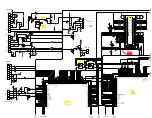
120
130
140
DATA 134,-6,32,134,-6,149,134,-l
DATA 134,152,32,152,32,152,32,134,-6,32,134,-1
DATA 137,-6,133,129,-6,133,138,0
Now that you have seen the program work, you can substitute
your own DATA lines to make it print
any
combination of graphics
characters
you
need. Notice
that
each DATA line corresponds to a
print line, and each ends with -1, except for the last, which ends the
program with a zero. For spaces, you use 32, the ASCII code for a
space. You can repeat any character, including the space, by entering
the
number of repetitions as a negative number followed by the num-
ber of the character to be repeated. For example, the first part of line
90 supplies the DATA for one vertical line (character 134), six spaces,
and another vertical line.
Dot Graphics
Think of your piece of paper as an artist’s canvas waiting for the
images you create. With dot graphics, you use dots instead of brush-
strokes to form your pictures and designs. If you plan carefully where
you want the dots to appear and use your computer to give the printer
the proper instructions, your P-80 will generate nearly any pattern or
figure you wish.
Printing high-resolution graphics on
the
P-80 requires a mode that
is very different from text modes. In dot graphics mode, none of the
predefined characters or symbols in the printer’s memory is used.
Instead, you create the patterns of dots that are printed. Thus, you
control where each and every dot is printed.
Print Head
For each column position on a print line, the print head impresses
the pattern of dots
that
you have specified. Before you can start
designing these patterns, you need to know a little more about the
way
the
print head works.
41
















































